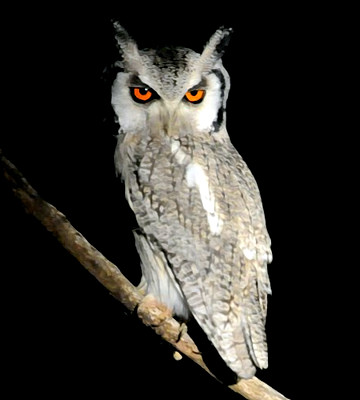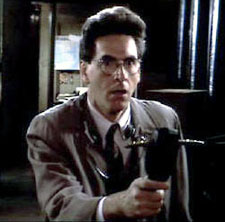Daf Yomi is an extraordinary phenomenon. Thousands of Jews, all over the world, making time every day - every single day - to learn a page of Gemara.
My father, of blessed memory, did not grow up in a religious home and did not have the benefit of a yeshivah education. While he became religious at a young age and always learned Torah in various settings, it was only when he moved to Israel and decided to plunge into Daf Yomi that his studies really took off. Every single day, for nearly twenty years, he walked a half-mile, no matter what the weather, to his Daf Yomi shiur.
Daf Yomi was the brainchild of Rabbi Meir Shapiro, who put forward his idea at the First World Congress of Agudas Yisrael in Vienna, 1923. Agudas Yisrael arranged the last Siyum HaShas at Madison Square Gardens in New York, and are arranging the forthcoming Siyum HaShas, to be held August 1 at MetLife Stadium. These are the greatest public celebrations of Torah in the history of the world.
Unfortunately, at these events, the glory is stolen from the true heroes of Daf Yomi and given to others.
There are two groups of people that are the heroes of Daf Yomi. First are the actual participants. These are largely ba'alei batim - regular people with regular jobs, who have every excuse to not be able to find the time for learning, and yet who make time in their schedules to keep up with the Daf. People learning the Daf on the train to work instead of playing games on their phones or spacing out. People on vacation getting up early to do the Daf before the day's activities. People setting up a system for keeping up with Daf Yomi on their iPads, on their mp3 players, so that mundane activities can be turned into an opportunity to connect with Torah and tradition.
The other heroes of Daf Yomi are the maggidei shiurim - those who prepare and teach the Daf every single day. It's a crushing schedule; I have great admiration for those who keep it up week after week, month after month, year after year. This group also includes those who teach Daf Yomi in other ways, such as those scholars who put together the ArtScroll and Steinsaltz Gemaras and the Daf Yomi Advancement Forum. These open up the Gemara to thousands of people who would not otherwise be able to learn it.
But who are the guests of honor at the grand Siyumim? Who performs the siyum, who makes the speeches, who gets the glory? Not the Daf Yomi participants and not even the maggidei shiurim. Instead, it's the roshei yeshivah.
This is not only tragic; it's also ironic. For the roshei yeshivah are the ones who not only do not learn Daf Yomi; they also often speak out against it!
Now, to be sure, there is room to criticize Daf Yomi. The breakneck pace means that the learning is often superficial and not committed to memory. But there is room to criticize the yeshivah style of learning, too. Spending endless weeks on three lines of Gemara is not exactly the traditional form of study. And learning without coming to clear halachic conclusions is entirely in opposition to the reasons for learning Torah that the Rishonim give.
But whatever the respective merits and drawbacks of the different approaches to learning Gemara, one thing is clear: yeshivos don't do Daf Yomi. Rabbi Meir Shapiro wanted all Jews to be studying the same material at the same time; yeshivos make no such effort. Rabbi Meir Shapiro wanted masechtos of the Gemara that are not usually studied to receive their due respect; yeshivos ignore those masechtos on principle. Daf Yomi is about covering ground in Shas, whereas in most yeshivos, the emphasis is on endless analysis of a few lines of Gemara - the "oker harim" approach instead of the "Sinai" approach. Most fundamentally of all, Daf Yomi is for ba'alei battim, the laymen from whom society is built, not yeshivah students. Why, then, would roshei yeshivah be the ones getting the glory at the Daf Yomi Siyum HaShas, and giving intricate pilpulim in Gemara (and in Yiddish!)? Mah inyan Rav Elya Ber Wachtfogel aitzel Sinai?
If I'm not mistaken, the explanation is as follows. The grand pomp of the Siyum HaShas, with tens of thousands of participants, offers Agudas Yisrael an opportunity to further one of their primary goals: strengthening the Daas Torah form of rabbinic authority, and specifically that of roshei yeshivah.
(Ironically, this latter aspect is not only contrary to tradition of Judaism in general; it is even contrary to the original form of Agudas Yisrael. The Council of Torah Sages of Agudath Israel were originally mostly either community rabbis or those with experience in such roles; today, they are virtually all roshei yeshivah who have never functioned in any such role.)
These are thy Gedolim, O Israel! That is what the siyum haShas does. Make the biggest public Jewish event, and give the stage exclusively to the people that you want to publicize as the heroes and leaders of the Jewish community.
With the glory being given to the exponents of Daas Torah, it provides them with a platform to use the event for the politics of Daas Torah. The last Siyum HaShas took place during the peak of the controversial ban on three of my books. One yeshivah figurehead took advantage of the opportunity to strengthen the ideology of Daas Torah, and capitalized on the martyrs of the Holocaust, in whose memories the Siyum HaShas is dedicated. Rav Mattisyahu Solomon spoke about how the martyrs demand us to reject the "makeshift answers" to conflicts between the Gemara and science that are offered by the "midgets of our generation." Aside from the question of whether approaches to the Gemara offered by countless Geonim and Rishonim and Acharonim can be called "makeshift," and the question of whether the victims of the Holocaust really did die for this belief, one has to wonder why a siyum on Daf Yomi is being used to further such an agenda. It's a siyum haShas, not an Agudas Yisroel convention!
Orthodox Jewish society is made up of many different important people and institutions. We need baalei battim and teachers and schools and lay leaders and yeshivos and roshei yeshivah and universities and academics and shuls and community rabbis and mohelim and shochtim. And there are differences of opinion about whether leadership should be held by lay leaders, community rabbis or roshei yeshivah. But Daf Yomi is not about any of those three groups. They have plenty of opportunities to receive glory, at dinners and Internet Asifas and Agudas Yisroel conventions. Daf Yomi is about the ordinary man who takes his ArtScroll Gemara on the train with him every morning on the way to work. He is the hero of the Siyum HaShas. Let's grant him his well-deserved honor!








